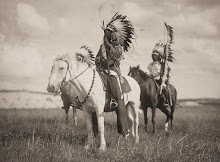skip to main |
skip to sidebar
Bodhi was right, he couldn’t paddle to New
Zealand bro. He must be in Belize waiting on the hundred years storm.
Expected to rise December 21, 2012.
Friday, May 9, 2008
The Thin Line Between Freedom Fighter and Terrorist
John
Brown, pictured above in 1846, was born in Connecticut in 1800 and
lived for 59 years until he was executed. Brown was an abolitionist,
dedicated to the cause of freeing slaves and ending the institution of
involuntary servitude in America. Unlike other more celebrated
abolitionists, Harriet Tubman, Frederick Douglass, William Lloyd
Garrison, to name a few, the legacy of John Brown is unheralded. What
distinguishes Brown, from others sharing his same passion, was the
violent means he sought to end slavery. He is most famous for two
incidents, Pottawatomie, Kansas, and the
raid on the federal arsenal in Harper’s Valley, Virginia. By modern
definitions, Brown was the first domestic “terrorist”. In the
“Pottowatomie Massacre, Brown killed 5 white Southerners over
settlement issues. When lawmakers admitted Kansas as a state, it was
stipulated that their stance on slavery would be decided by popular
sovereignty. This turned out to be a disaster that gave rise to the
term, “Bleeding Kansas,” to describe the skirmishes between
anti-slavery advocates like Brown and pro-slavery supporters.
Brown’s
hell raising in Kansas would not be his defining moment. In 1859 as the
country was teetering on the brink of separation, his raid on the
federal arsenal in Harper’s Ferry, Virginia was the final straw.
Following months of planning, Brown and 19 men managed to gain control
of the arsenal with intentions of arming slaves across the countryside
and leading a revolt. Captured by a contingent of U.S. Marines led by
Robert E. Lee, Brown’s dream was quickly extinguished.
Brown
was not the first one to attempt to arms slaves in revolt, nor was he
the most successful, in the terms often measured by martyrs. In August
of 1831 in Southampton, Virginia, Nat Turner led 50 slaves on a 2 day
spree that saw 56 white men, women and children die. Nat’s case is
slightly different in that he was a slave, it was his own freedom that
was worth dying for. Brown is a curious figure in that regard, a free
white man, so passionate about the liberation of slaves, that he was
willing to make war.His legacy as an abolitionist is difficult to
judge. His cause cannot be doubted, but his methods are troubling. He
is a freedom fighter for giving his life to a cause, for not waiting
for political machinations to free a race from bondage. Yet he is a
terrorist for his unwarranted attack on American military installments.
This leaves us with a Machiavellian question, does the end justify the
means?
Labels:
Bad History,
Racism,
The South,
U.S. History
Post Comments (Atom)
Tallest Trees
Labels
-
Hotties
(44) -
Politics
(41) -
Brunettes
(32) -
Blondes
(26) -
U.S. History
(25) -
Bad History
(23) -
Criminal Law
(18) -
Pearl Necklaces
(16) -
Racism
(16) -
College Football
(14) -
Scandals
(13) -
The South
(13) -
NFL Football
(12) -
Old Skool
(12) -
Black Sunglasses
(11) -
Consumerism
(11) -
People on TV
(11) -
Barak Obama
(10) -
Cable News Babes
(10) -
Ex Presidents
(10) -
Immigration
(10) -
Latin America
(10) -
Hip Hop
(9) -
Polls
(8) -
Irony
(7) -
Maps
(7) -
Baseball
(6) -
George Bush
(6) -
Hillary Clinton
(6) -
Man of the Week
(6) -
The Failures of Corporate Media
(6) -
Miami
(5) -
Cuba
(4) -
Gingers
(4) -
NBA Basketball
(4) -
Stop Snitching
(4) -
Fidel Castro
(3) -
Jay Z
(3) -
Jessica Alba
(3) -
Lady of the Week
(3) -
Mélissa Theuriau
(3) -
Nebraska
(3) -
Alessandra Ambrosio
(2) -
Bill Clinton
(2) -
Che Guevara
(2) -
Jackie Guerrido
(2) -
Lebron James
(2) -
Penelope Cruz
(2) -
Salma Hayek
(2) -
Spain
(2) -
The Game
(2) -
50 cent
(1) -
Adrianna Costa
(1) -
Atticus Finch
(1) -
Bo Jackson
(1) -
Bob Marley
(1) -
Bohemian Club
(1) -
Camino de Santiago
(1) -
Cayman Islands
(1) -
Dr Dre
(1) -
Gisele
(1) -
Hippies
(1) -
Irv Gotti
(1) -
Ja Rule
(1) -
Jam Master Jay
(1) -
Larry Bird
(1) -
Lil Kim
(1) -
Links
(1) -
Mark Twain
(1) -
Memorial Stadium
(1) -
Morocco
(1) -
Olympics
(1) -
Orange Bowl
(1) -
Photographs
(1) -
Queen Rania
(1) -
Robin Meade
(1) -
Snoop Dogg
(1)
Blog Archive
-
▼
2008
(140)-
▼
May
(60)- El Fin de Semana
- The Nail in the Coffin
- Yellow Journalism
- Cable News Babes of the Week
- Snitches on Rocky Top
- The Changing Face of Beauty
- Off the market
- Hello DNC, meet the BCS
- The Most Honest Man in America?
- Silence please
- The GOP’s Silver Bullet
- A Bevy of Blondes
- Hip Hop Machismo
- The one thing Oklahoma and the Philippines have in…
- Granola Games
- When Old School beats New School
- Blogging and Jogging
- Rubber Euphemisms
- A legend passed too early
- Commercial Babes
- Tent City, It’s Dark and Hell is Hot
- First Bride Jenna Bush
- The Ugliest Uniforms in College Football
- Solar Moments
- Taurean Charles, Year of the Bull
- The Thin Line Between Freedom Fighter and Terroris…
- Two fake movie products I want to buy
- Making the most of it
- More Self Shots
- Doctors pushing products that harm
- VE Day
- Snitching in Paradise
- N.W.A. and Nirvana
- Goddesses in Green
- What is it with these self-pics?
- What do a Trekkie and the Coach of Da Bears have i…
- World’s 12th Highest Standard of Living
- Lindsay Lohan
- It’s raining lawsuits at the Weather Channel
- Siblings are Strange
- Border Traffic
- Lookin’ Fine in Yeller
- Did Pete Rose see it coming?
- Indiana and North Carolina
- First Lady Laura Bush
- Cinco de Maya
- Go Cougars
- No Schlitz
- Salma Hayek, A Great Mexican-American
- Pillow Talk Politics Addendum
- American Culture is a Recycling Bin
- Wingman
- Hall of Fame Athletes and Statuatory Rape
- Weather hotties from across the pond
- Thomas “Stonewall” Jackson
- Green Bikinis can do no wrong
- Pillow Talk Politics
- The Prescience of The Graduate
- Scarlett Johansson’s pearl necklace
- Misguided Vigilante Justice
-









0
comments:
Post a Comment